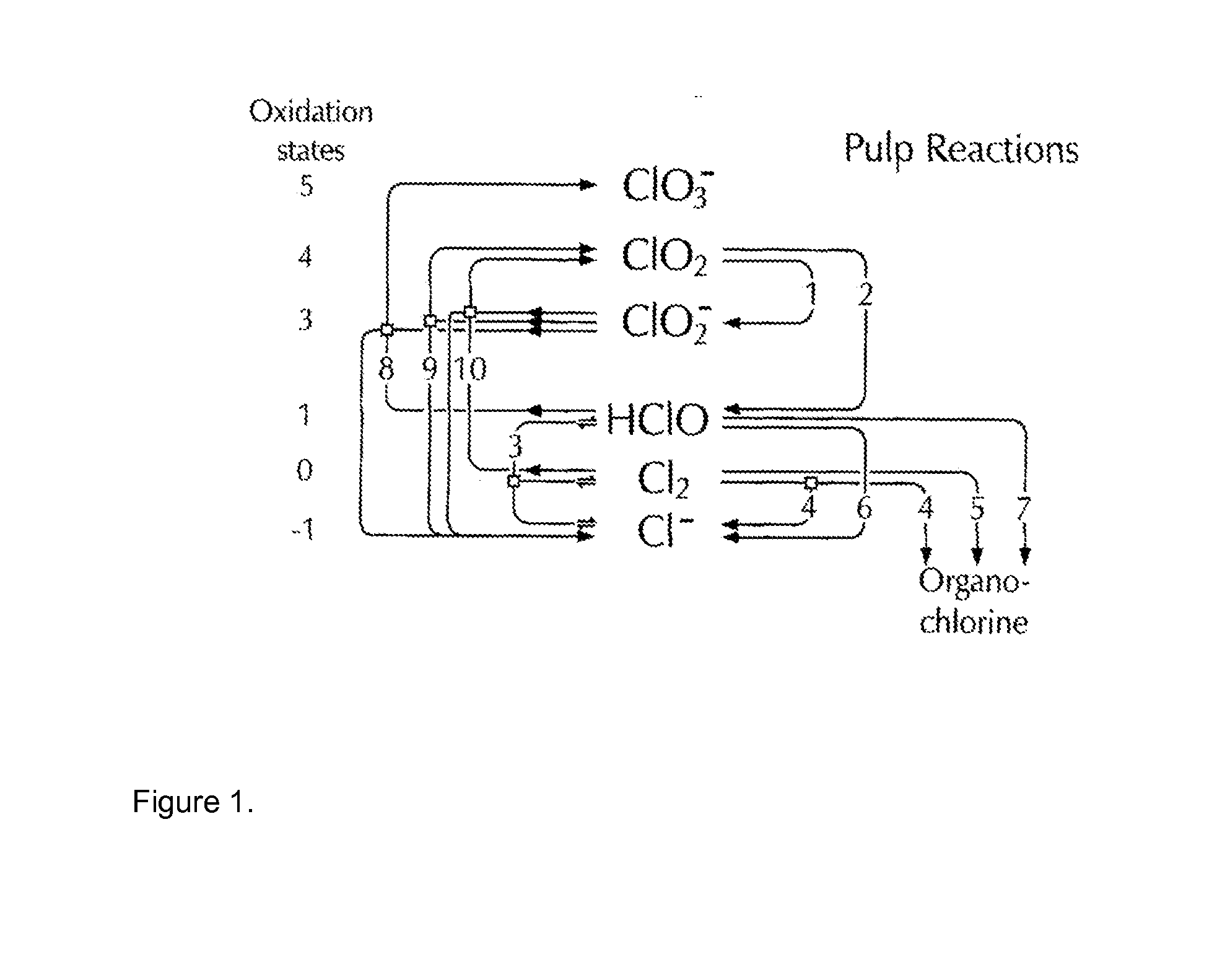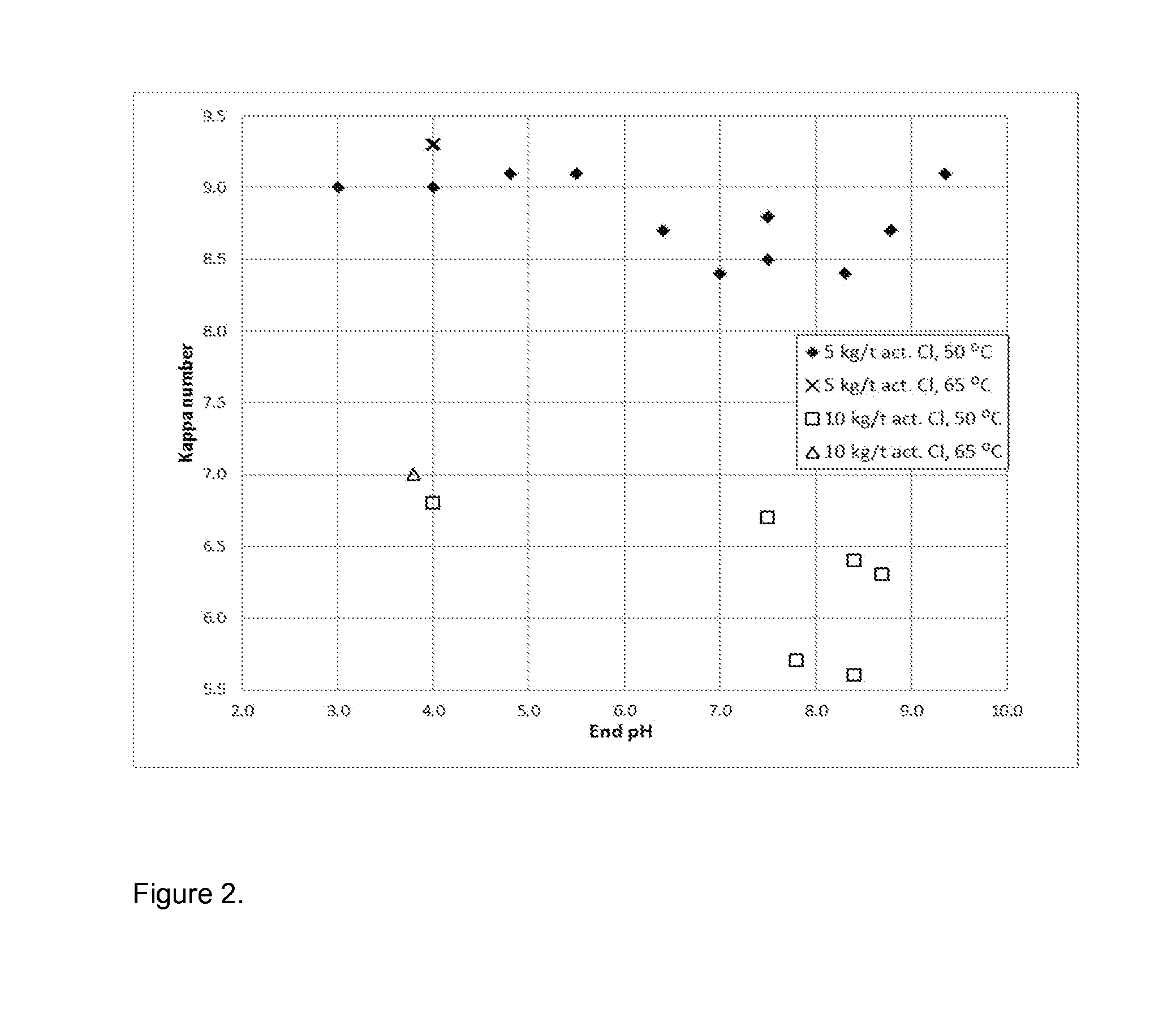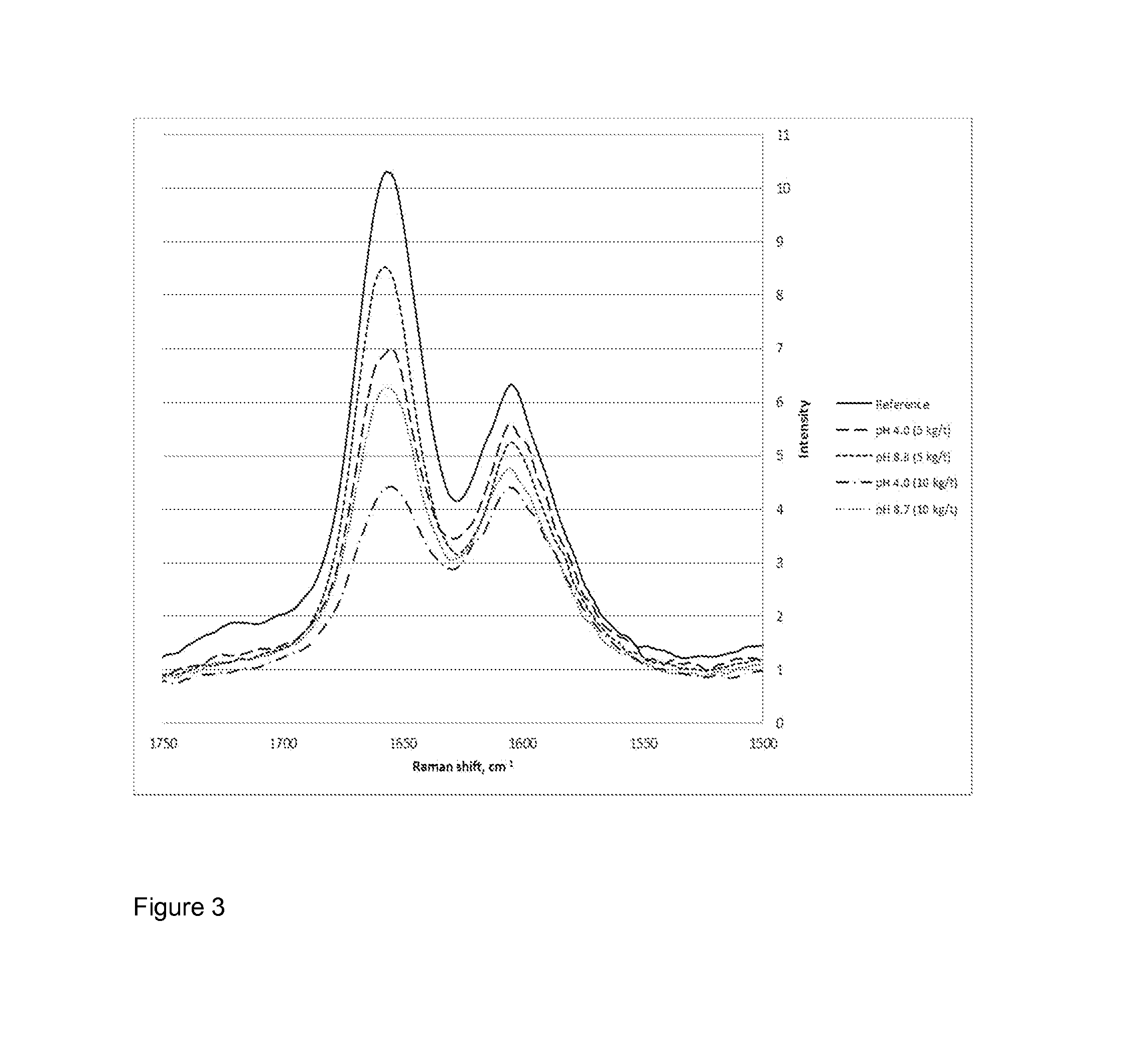Method For Bleaching Pulp
a technology of bleaching pulp and pulp pulp, which is applied in the direction of pulp liquor regeneration, non-fibrous pulp addition, papermaking, etc., can solve the problems of unsatisfactory bleaching results, unsatisfactory bleaching results, and insufficient cooking of chips, so as to reduce the time for bleaching and improve the bleaching effect. , the effect of energy saving
- Summary
- Abstract
- Description
- Claims
- Application Information
AI Technical Summary
Benefits of technology
Problems solved by technology
Method used
Image
Examples
example 1
[0096]Oxygen delignified birch Kraft pulp obtained from an industrial pulp manufacturer was treated with triethylenediamine (from Sigma-Aldrich, Germany) and sodium hypochlorite (from Prolabo, Belgium).
[0097]The pulp was defined to have a kappa number of 13.9, ISO brightness of 51.4% and hexenuronic acid content of 58 mmol / kg. Triethylenediamine concentration in the pulp to be treated was adjusted to 0.1% by weight of pulp and the active chlorine charge of the sodium hypochlorite used was 0.5 or 1.0%. The pulp consistency was 10% by weight and a medium consistency mixer (MC) was used to provide efficient mixing.
[0098]After the initial control of pH by acid or alkali (H2SO4 or NaOH) and addition of triethylenediamine to the pulp, the MC reactor was closed and thermostated to 50 or 65° C. The solution of sodium hypochlorite was added to the suspension under vigorous stirring. After 10 min the reactor was opened and the pulp was washed with deionized water. The time frame of 10 min is ...
example 2
[0105]Pulps treated with triethylenediamine and sodium hypochlorite according to Example 1 were subjected for a second bleaching treatment with sodium hydroxide (0.33-0.65% by weight of pulp), hydrogen peroxide (0.6% by weight of pulp) and oxygen (300 kPa pressure). Magnesium sulfate (0.2% by weight of pulp) was used as a stabilizer for hydrogen peroxide. The treatments were carried out in a Teflon coated rotating reactor at 10% consistency. The reactor was heated to 85° C. and kept for 90 min at this temperature. The treatment was interrupted by cooling the reaction vessel in cold water and washing the pulp suspension with deionized water. Results from the treatments are summarized in Table 1 wherein Eop-stage denotes the oxidized alkaline extraction with sodium hydroxide, hydrogen peroxide and oxygen, and Dabco denotes the prebleaching according to Example 1 with triethylenediamine (DABCO) and sodium hypochlorite.
[0106]The alkaline peroxide treatment decreased the kappa number by ...
example 3
[0114]The hexenuronic acid reaction rate in the amine catalyzed bleaching step was studied ex situ by removal of the possible disturbing factors present in the actual pulp processing.
[0115]A pure model compound of hexenuronic acid (0.2 mM aqueous solution), methyl 4-deoxy-β-L-threo-hex-4-enopyranosiduronic acid (synthesized as described in Adorjan, I. et al. Synthesis and characterization of the hexenuronic acid model methyl 4-deoxy-b-L-threo-hex-4-enopyranosiduronic acid, Carbohydrate Research 341:14 (2006) pp. 2439-2443), was treated with sodium hypochlorite (0.2 mM aqueous solution) separately in the absence and presence of triethylenediamine (0.005 mM aqueous solution). The reaction mixture was prepared in a pH 8 buffer solution. The reaction was monitored by measuring UV absorbance of the reaction mixture at 229 nm which represents the absorption maximum of hexenuronic acid.
[0116]In the presence of the amine catalyst the reaction was completed in less than a minute. Without the...
PUM
| Property | Measurement | Unit |
|---|---|---|
| temperature | aaaaa | aaaaa |
| delay time | aaaaa | aaaaa |
| temperature | aaaaa | aaaaa |
Abstract
Description
Claims
Application Information
 Login to View More
Login to View More - R&D
- Intellectual Property
- Life Sciences
- Materials
- Tech Scout
- Unparalleled Data Quality
- Higher Quality Content
- 60% Fewer Hallucinations
Browse by: Latest US Patents, China's latest patents, Technical Efficacy Thesaurus, Application Domain, Technology Topic, Popular Technical Reports.
© 2025 PatSnap. All rights reserved.Legal|Privacy policy|Modern Slavery Act Transparency Statement|Sitemap|About US| Contact US: help@patsnap.com



